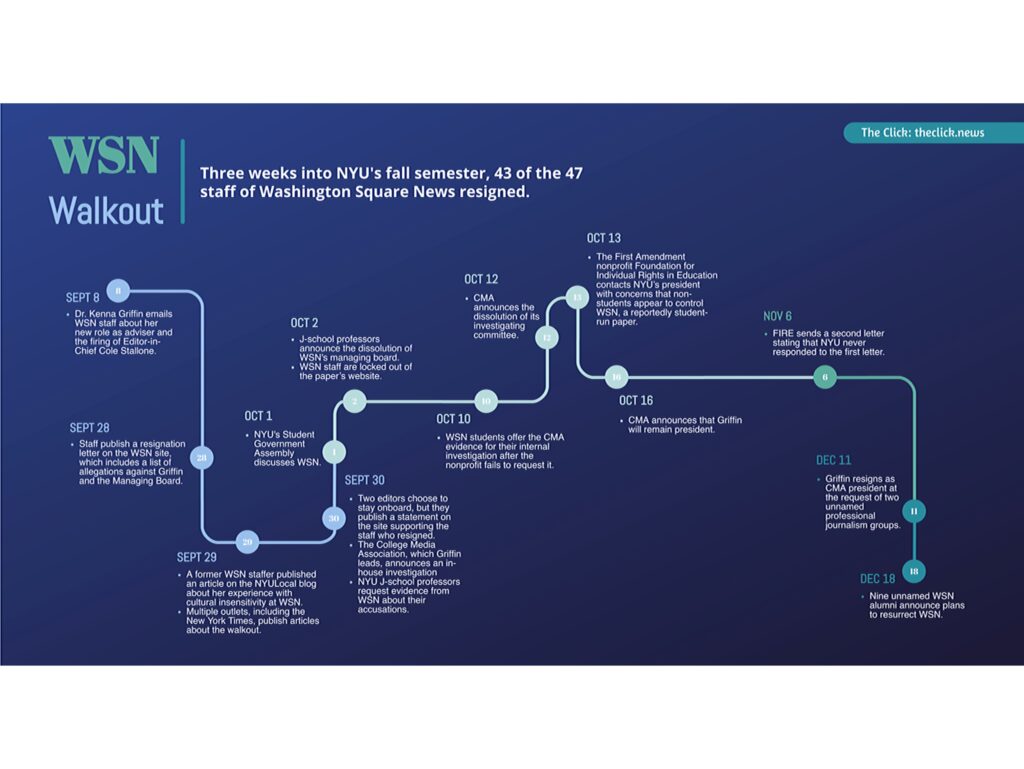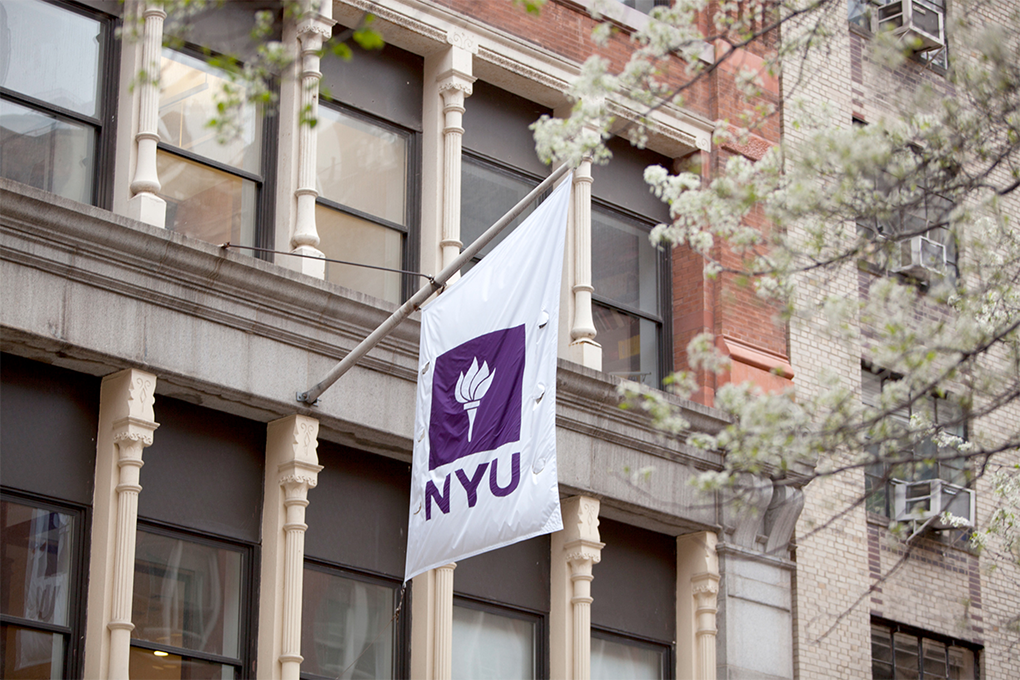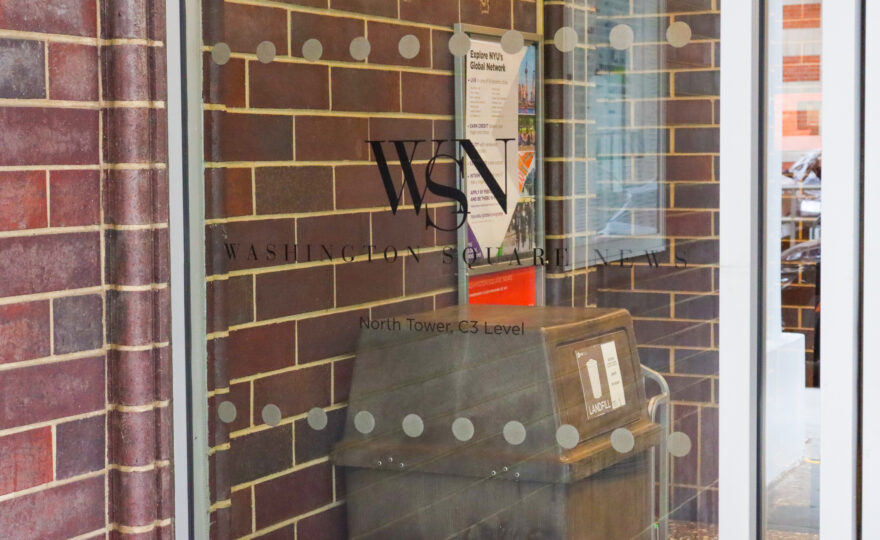The future of New York University’s student-run newspaper remains in doubt months after 43 out of 47 staff members resigned in a public letter listing grievances against their new editorial adviser.
In the open letter published on the website of Washington Square News on Sept. 28, the students argued that that adviser, Dr. Kenna Griffin, created a work environment so hostile and unwelcoming that they had no choice but to leave. WSN had served as one of the campus’ main news sources since its founding in 1973. It’s been shuttered since the letter went live.
As NYU prepares to welcome back students at the end of January, The Click has taken a look at everything we know about the walkout so far, and what parts of the ongoing saga still need answers.
INITIAL ALLEGATIONS
The catalyst for the months-long turmoil was an email Griffin sent to WSN’s staff on Sept. 8, according to interviews with several staff members. In the email, Griffin announced both her new role as the paper’s editorial adviser and the firing of its editor-in-chief. In those same interviews, WSN staff members described feeling like they could be fired next, especially as questions arose over Griffin’s management style.
Among the 22 allegations that the students posted on their website were accusations that Griffin pressured a transgender student to reveal their birth name, and that she was so disrespectful to a Black editor over an editorial dispute that that student felt compelled to quit.
Griffin has not responded to multiple requests for comment from The Click.
Three WSN staff members told The Click that the entire staff was locked out of WSN’s website on Oct. 2. That same day, professors at NYU’s journalism school also dissolved the paper’s board, a four-member entity made up of two professors from the journalism school and two students from WSN (the editor-in-chief and the business manager). The board was empowered by WSN’s four-page constitution to oversee the news outlet and to hire and fire key managerial figures, including the editor-in-chief and the business manager, as well as any advisers. As of this writing, the WSN’s board remains dissolved.
Soon after, the First Amendment advocacy group Foundation for Individual Rights in Education (FIRE) sent a letter to NYU President Andrew Hamilton accusing the university of violating the rights of the college press. The letter alleged that WSN’s organizational structure gave professors from the journalism school on the managing board and other “non-students” power over students’ independent leadership of their own newspaper. Hamilton never responded to FIRE’s complaints, including a second letter sent sometime later.
Griffin, meanwhile, had an initial show of support from the College Media Association, a nonprofit she’d been involved with since 2017. She’d been in the middle of serving a two-year term as president when the walkout took place. The group announced that it would keep her on as its leader while it carried out an investigation into the students’ accusations. In mid-October, the CMA’s governing board voted to keep Griffin as president permanently.
However, that stance changed in mid-December when the CMA sent a letter to its membership announcing that Griffin stepped down the day before at the request of two unnamed professional media organizations and a number of CMA members.
The journalism training center Poynter broke the news of Griffin’s resignation on Dec. 18. That afternoon, an anonymous group of nine WSN alumni contacted Poynter to disclose that they intended to relaunch WSN in 2021 with a new editor-in-chief. The alumni also planned to take the spots on WSN’s board previously held by the journalism professors.
INVESTIGATIONS
WSN’s sudden walkout kicked off investigations within and without the university.
The CMA’s investigation was the most transparent, with sporadic updates sent to its members. On Sept. 30, the CMA announced the formation of a four-person committee to carry out the investigation into what happened between Griffin and the students, with an end date set for Oct. 12.
A couple of days before the investigation, WSN students contacted the CMA to present evidence (screenshots, emails, and recordings) that the students said backed up their allegations. The students told The Click that the CMA initially seemed receptive, scheduling an interview with WSN Managing Editor Abby Hofstetter for Oct. 12. However, the committee canceled hours before the interview and announced its dissolution over a fear of legal liabilities, according to sources. Two months later, Griffin would be asked to step down as president. The CMA never completed its investigation.
Whispers of other investigations came and went in the days after the walkout. In emails reviewed by The Click, professors at the journalism school asked that proof of the allegations against Griffin be collected into a special Google drive. That fact-finding mission seems to have ended after those same professors dissolved WSN’s managing board.
Sources told The Click that NYU’s student government body discussed the walkout in an Oct. 1 meeting. There, student senators reported that a faculty adviser mentioned a preliminary investigation had found that the accusations against Griffin were overblown. However, the university has never publicly disclosed either an investigation or possible results from one.
PAST ACTIONS
To check the validity of WSN’s allegations, The Click contacted former and current students who’ve worked or learned under Griffin. Their accounts ranged from deep admiration to accusations of emotional trauma.
Before her gig at NYU, Griffin served as an adviser for the student publications at Oklahoma City University (OKCU). An alum of that school said she valued Griffin so much that she invited the adviser to her wedding. Another student from that same university said they transferred schools to get away from Griffin. They ended up quitting journalism altogether.
But Griffin isn’t the only actor in this saga with a complex past. An investigation by The Click found that WSN has had a history of insufficient fact-checking, error-filled articles, and what sources alleged were hostile responses to criticisms of those mistakes.
Staff at the paper have also been accused of insensitivity toward activist groups and belittling people of color who worked in the newsroom.
WHAT REMAINS UNRESOLVED
Three months of coverage on the WSN walkout have yielded not only mixed accounts of the controversial adviser and the newsroom culture, but also a host of unanswered questions.
How did Griffin enter the picture?
Griffin’s announcement that she was the paper’s new adviser came as a shock to the WSN staff. In an email sent to them on Sept. 8, Griffin wrote she was brought in to help “professionalize WSN and bring it back up to award-winning standards.” She also announced the controversial firing of the paper’s editor in chief.
Based in Oklahoma, Griffin advised the WSN staff remotely via Zoom and email. The hiring of remote advisers for student newspapers is generally uncommon, according to Mark Goodman, a journalism professor at Kent State University. Students who talked to The Click also said they were surprised someone local wasn’t chosen for the role.
The conjecture among the students who spoke with The Click is that Griffin nabbed the role thanks to her connection to Nanci Healy, assistant director of Student Life at NYU. Healy, who also has the informal title of WSN managing director, said in an email to the students that she had previously worked with Griffin and knew her through the CMA. Healy has not responded to requests for comment.
What’s Griffin’s connection to NYU?
The Click has not been able to determine whether Griffin was officially employed by NYU. According to a statement issued by university spokesman John Beckman after the walkout, WSN “operates autonomously,” and any dispute must be settled between the students, the managing board, and the adviser. That statement defined Griffin’s role as a “person independent of NYU and is paid with WSN revenues.”
However, according to WSN students, Griffin gave the impression she was employed by the school. The CMA’s Oct. 12 statement indicated that Griffin “remains employed by NYU.”
What happens next?
As of this writing, NYU has not issued a statement on the status of WSN, nor a reaction to the alumni who are volunteering to revive the publication.
WSN had been the main campus newspaper until the mass resignation last fall. Filling the void since the walkout are two other media outlets primarily run by NYU students: the blog NYULocal and the WNYU radio station.
It is still unclear how much longer WSN will remain shuttered, when WSN will publish again, and if so, whether the former staff will return.


